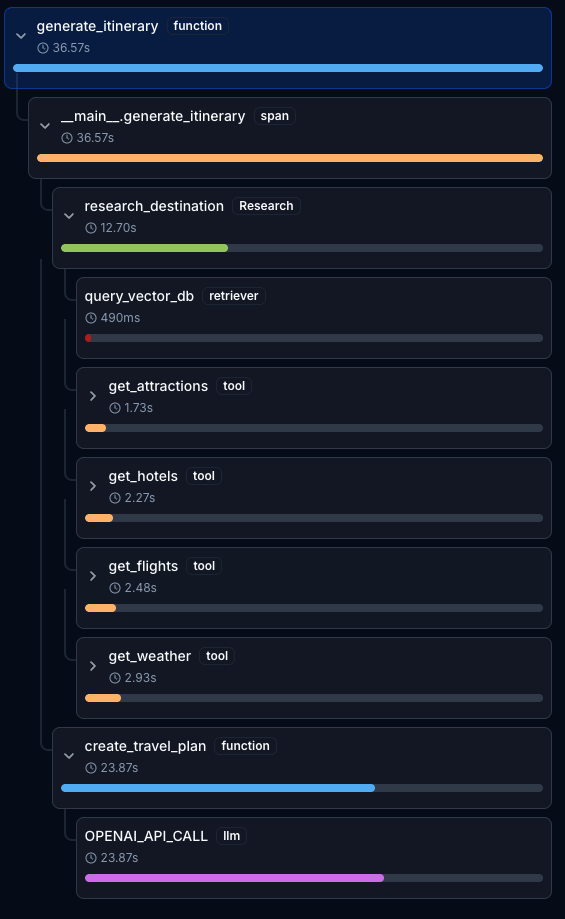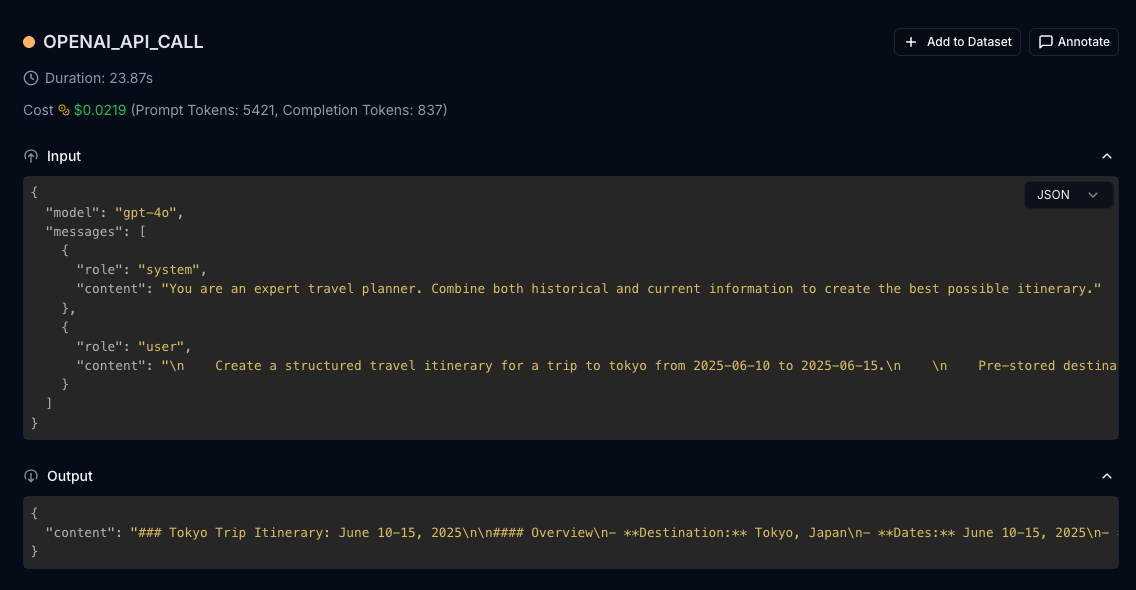Tracing
Anatomy of a trace
A trace is a record of a single request to an agent, made up of multiple spans.
Traces record the path of an agent's execution, making it easy to debug issues and understand the flow of an agent. Beyond debugging, traces can be in combination with evaluation metrics to form valuable data for agent optimization.
 Example of tracing a travel agent creating a trip itinerary
Example of tracing a travel agent creating a trip itinerarySpans
Spans are the atomic units of work in an agent trace. They have an input, output, start time, and end time. Trace spans capture operations such as tool calls, LLM calls, and reasoning steps.
Here is an example of a span of an LLM call:

Span Types
Span types are used to categorize the various types of operations recorded in a trace.
If you use frameworks like LangGraph, span types are automatically populated based on the framework's internal operations.
If you're building your own agents from scratch, you can add span types by including the span_type field in your @observe trace decorator:
from judgeval.tracer import Tracer
judgment = Tracer(project_name="my_agent")
@judgment.observe(span_type="tool")
def my_tool(...):
pass